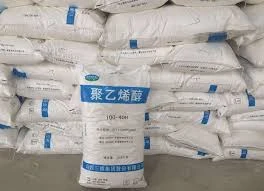Understanding MHEC Powder Properties and Applications
MHEC (Methyl Hydroxyethyl Cellulose) powder is a widely utilized cellulose derivative that has garnered significant attention in various industries, particularly in construction, pharmaceuticals, and personal care products. This multifunctional material is known for its excellent water retention properties, surface activity, and thickening abilities, making it an indispensable additive in numerous formulations.
What is MHEC Powder?
MHEC is a non-ionic, hydrophilic polymer derived from natural cellulose. It is synthesized through the modification of cellulose using methylene chloride and ethylene oxide, which results in a product that exhibits enhanced solubility in water. MHEC appears as a white or off-white powder that is odorless and tasteless. One of its distinctive characteristics is its ability to form a gel-like solution when mixed with water, making it a valuable ingredient in various applications.
Properties of MHEC Powder
One of the most notable properties of MHEC powder is its exceptional water retention capability. This feature is particularly beneficial in construction applications, where it helps improve the workability and durability of cementitious materials such as mortars, plasters, and tile adhesives. Moreover, MHEC powder provides good adhesion, enhances the cohesion of the mix, and minimizes the risk of cracking or shrinkage during curing.
Another significant property of MHEC powder is its thickening ability. This viscosity-enhancing property is crucial in the formulation of various products, ranging from paints and coatings to personal care items like shampoos and creams. The ability of MHEC to thicken solutions without significantly altering their appearance makes it a preferred choice for formulators looking to achieve consistency and stability in their products.
mhec powder

Additionally, MHEC exhibits excellent thermal stability and can endure a wide range of temperatures, making it suitable for applications that require robustness under varying environmental conditions. Its non-ionic nature also means that it is compatible with a range of other materials, providing versatility in formulation processes.
Applications of MHEC Powder
The applications of MHEC powder span a wide array of industries. In the construction sector, it is commonly used in tile adhesives, wall putties, and other cement-based formulations, where it acts as a performance enhancer. The water-retaining properties ensure that the adhesive remains workable for longer, facilitating better bonding and reducing the risk of substrate damage.
In the pharmaceutical industry, MHEC serves as a binder and film-forming agent in tablet formulations. Its controlled release properties allow for the development of sustained-release medications, ensuring that active ingredients are released gradually, enhancing therapeutic efficacy.
In the personal care industry, MHEC is often found in various cosmetic products, including lotions, creams, and gels. Its ability to impart a smooth texture while providing hydration makes it a valuable ingredient in skin and hair care formulations.
Conclusion
In conclusion, MHEC powder is a versatile and highly beneficial ingredient utilized across multiple industries. Its unique properties—such as water retention, thickening, and thermal stability—make it an essential additive in formulations ranging from construction materials to personal care products. As research continues and new applications are discovered, the importance of MHEC powder is anticipated to grow, solidifying its role as a critical component in modern product development.
-
Rdp Powder: Key Considerations for Wholesalers in the Building Materials IndustryNewsJul.08,2025
-
Key Considerations for Wholesalers: Navigating the World of Hpmc - Based ProductsNewsJul.08,2025
-
Hpmc Detergent: Key Considerations for WholesalersNewsJul.08,2025
-
Key Considerations for Wholesalers: China Hpmc For Tile Adhesive, Coating Additives, Concrete Additives, and MoreNewsJul.08,2025
-
Crucial Considerations for Wholesalers: Navigating the World of Construction MaterialsNewsJul.08,2025
-
Key Considerations for Wholesalers Sourcing Additive For Cement, Additive For Concrete, Additive For Putty from Additive Manufacturer Shijiazhuang Gaocheng District Yongfeng Cellulose Co., Ltd.NewsJul.08,2025




